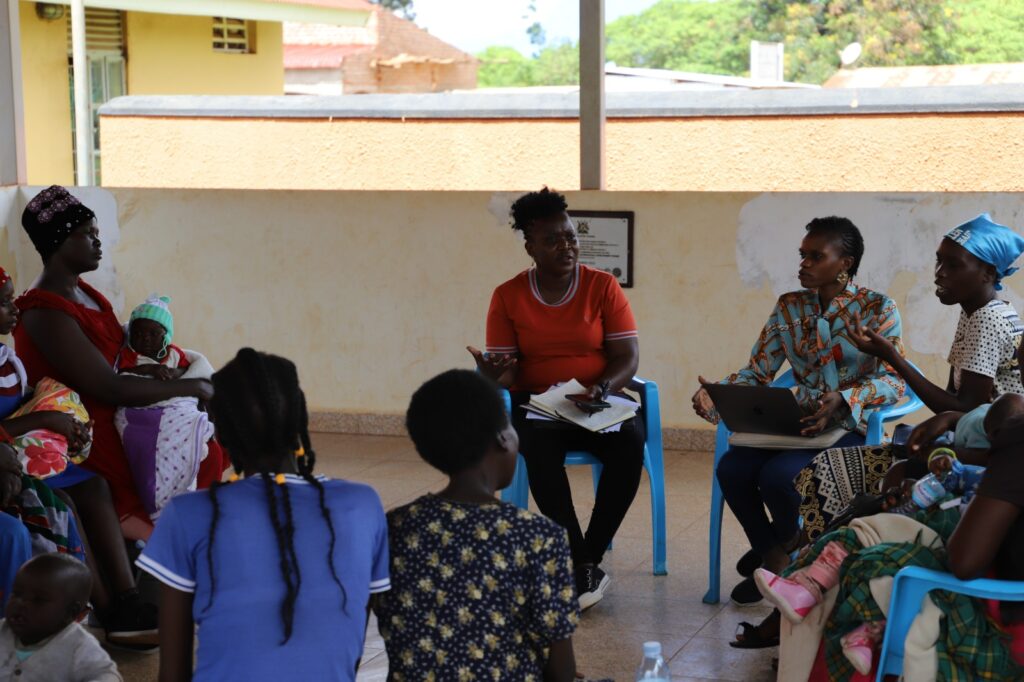Unearthing Gender, Youth, and Social Inclusion Barriers to Cervical Cancer Screening Uptake in the Sebei region, Eastern Uganda
By Flavia Mystica Atoo, WI-HER Gender and Youth Specialist

When gender, youth, and social inclusion (GYSI) barriers are addressed, we stand a better chance of ensuring equitable access to health services, thereby improving health outcomes for all. For example, in countries like Uganda, where cultural and social norms profoundly influence health-seeking behaviors, GYSI integration helps make health services accessible and responsive to the needs of all individuals, regardless of their gender, age, or social status, thereby promoting a more inclusive healthcare system.
In our commitment to health and equality, understanding and overcoming these barriers has been a central focus of our collaborative work in the Sebei region of Eastern Uganda. WI-HER recently facilitated audience engagement initiatives to deeply explore these challenges, placing a special emphasis on understanding how gender dynamics uniquely affect access to crucial health services like cervical cancer screening. These insights are not only useful for improving health outcomes in the region but also for informing our continued global efforts to ensure that every individual, particularly those often marginalized in healthcare settings, can access the life-saving services they need.
The Sebei region is predominantly occupied by the Sapiiny community, who practice female genital mutilation (FGM) among young girls aged 14 years as a rite of passage into womanhood. The region, like others in Uganda, has experienced a notably low uptake of cervical cancer screening services, especially among HIV-positive women, as indicated by our regional implementing partner. By the time of WI-HER’s first audience engagement in October 2023, the local partner had only managed to screen 19 out of 192 eligible clients. It was hypothesized that the practice of FGM among these women might contribute to their reluctance to visit facilities for cervical cancer screening, leading to suboptimal service utilization.
To investigate this hypothesis, unearth barriers to cervical cancer screenings, and design effective solutions, regional partners came together with WI-HER to facilitate a community audience co-creation session with the Sapiiny community. This focus group discussion (FGD) involved a representative group of 21 semi-literate women aged between 19 and 53 from Ngenge and Kapronon sub-counties in Kween and Kapchorwa districts. The objective was to gain insights into knowledge, barriers to service uptake, and potential opportunities in their communities. The key barriers from the discussion did not end up including FGM. Rather, the session unearthed the following barriers:
- Fear of the screening process: Participants expressed apprehension about the procedure, with one participant stating that “To be screened, one lies on their back, opens their legs, and different metals are inserted into their private parts. There is something they pull out (a cervix) [and] check [to] see if [we are] sick or not.”
- Spousal permission: Some women felt they could not visit health facilities without their husbands’ consent. For instance, one young girl mentioned that “I would not go to the health facility without permission from my husband to keep peace at home.”
- Domestic responsibilities: The burden of household chores and caregiving prevented women from visiting health facilities and attending community gatherings where they might receive relevant information.
- Stigmatization and misconceptions: There is a widespread perception among men that cervical cancer and STIs are the result of promiscuity and that screening is only meant for HIV-positive women, fostering stigma and hindering uptake for the women.
In addressing these barriers, the focus group discussed various strategies to raise awareness and increase access to cervical cancer services. These strategies and identified solutions included:
- Prioritize engaging men, as they significantly influence the health decisions that women make; informing men and enlisting their support is essential.
- Having trained health workers bring cervical cancer information and services closer to women through community outreach programs can help debunk myths and misconceptions and can also address the problem of traveling long distances to health facilities.
- Preparing women and their partners for the screening process is vital, especially given how FGD participants expressed their discomfort with the idea of medical instruments being used during the screening process.
- Equally, there should be intensified, targeted mobilization to raise awareness about the signs and symptoms of cervical cancer, its transmission, affected demographics, prevention and treatment options, and how to access available services.
After discussing these strategies and suggested solutions, the regional implementing partner tailored their social and behavior change plans to address the identified barriers to cervical cancer screening.
While structural, service provider, and systemic barriers are often emphasized, issues related to gender, youth, and social inclusion present significant obstacles for women accessing cervical cancer services, particularly in rural areas. Therefore, addressing those issues with focused and deliberate efforts is crucial to improving service uptake among these populations.
The journey of unearthing and addressing these barriers in Uganda exemplifies WI-HER’s dedication to making healthcare more equitable and accessible. We believe that by analyzing and integrating GYSI considerations into our approach, we can make significant progress towards a world where everyone has the opportunity to live a healthier life.